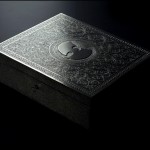Fuck This Wu-Tang Only-One-Copy Album, The Kickstarter, & All The Wingnut Bullshit [Part 1/3]
Wu-Tang’s producing only 1 copy of their “secret” album w/plans to sell it for millions. A kickstarter is trying to raise the money. I talk some shit about it.
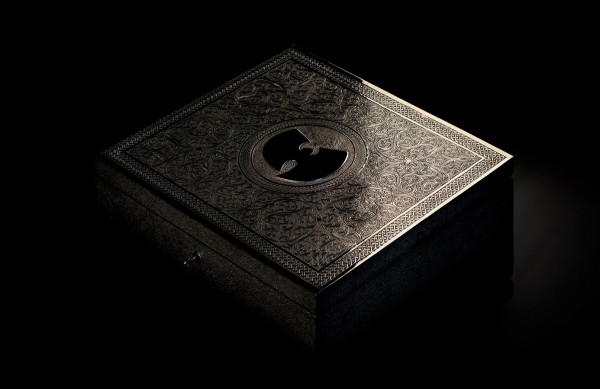
As late Brooklyn rap legend, Old Dirty Bastard so famously informed us–after swarming the mic during Shawn Colvin‘s acceptance speech–during the 1998 Grammy Awards, and Swedish skier, Henrik Harlaut recently reminded us at the Sochi Olympics, in February–right before his pants fell down during his run–“Wu-Tang is for the children!” And somehow, regardless of all of the lines they’ve spit about crack dealing, murder, or fools getting their assholes sewn shut, over the years, we have collectively accepted that basic sentiment that Wu-Tang was indeed “for the children.” There have been plenty of missteps, incarcerations, questionable business moves, and even a couple of tales regarding journalists being knocked around, but in the end… “for the children.” Now, with the release of one particular over-the-top ambitious project from the Wu, that famous motto is beginning to seem more questionable than ever. The launch of a new kickstarter campaign, however, epitomizes the metaphorical “children” desperately attempting to retain their birthright.
The Single Copy $5 Million Album
Let’s begin by getting right to it by introducing the project known as The WU – Once Upon A Time In Shaolin, breaking down exactly what it is, and explaining the purpose and intention behind the release. [Full disclosure: I’m not entirely sure, myself].
In short, the legendary New York hip-hop collective worked in collaboration with Marrakech, Morocco-based producer and longtime affiliate, Tarik “Cilvaringz” Azzougarh, to record the new 31 track double-album “in secret” over the course of 6 years. Also an emcee, Cilvaringz originally signed with Wu-Tang records back in 1999, and was taken under the wing of “The Abbot,” groundbreaking WU mastermind/super-producer, Robert “RZA” Diggs. Over the years, RZA has gradually drifted away from the trademark sound that he crafted, which put “the Killah Bees” on the map, in the first place, but the official site for Once Upon A Time In Shaolin claims that “the album encapsulates the Clan’s legendary dark funk and avant garde sound and is produced in the original Wu Tang style of the 90s.”
For those of you who have already heard about the Wu-Tang clan reuniting for their delayed 20th anniversary studio album–their first as a unit since 2007‘s 8 Diagrams–this is not it. That one, titled A Better Tomorrow, is currently still in production and scheduled for a fairly straightforward summer release, in comparison. For Once Upon A Time In Shaolin, Diggs and Azzougarh have envisioned something much more outside of the ornately engraved hand-crafted box. First of all, this is not only intended to be a one-of-a-kind album, stylistically, but physically, as well–they are only producing ONE SINGLE COPY. That singular copy will then be housed in an elegant silver and nickel-plated box, which has been crafted by noted British Moroccan artist Yahya, over a 3 month period.
Feel free to take a quick look at this gallery of images, so that you have a better grasp on what we’re truly referring to here…
Fancy stuff, eh? That’s because Yahya is no joke and has a track record of being commissioned for works by royalty and hot shot business tycoons across the globe. The expectations and demands on quality are definitely high.
So what is to become of this one-of-a-kind, single-copy release enshrined in another one-of-a-kind piece of gilded art? Well, according to it’s creators, the intention is to travel with the album, throwing glorified listening parties in select locations and then, after that’s all said and done, sell it to an individual with fat pockets who’s willing and able to fork over the speculated multi-million dollar pricetag to own it. I have an endless amount of opinions regarding this ploy concept, but before I get into all of those, let’s check out a more detailed breakdown about the project using text taken directly from the website.
Excerpt from the section titled “About“:
“This is the first high-profile album never to be commercially released to the public and the first of its kind in the history of music. The music is available for purchase and ownership by one individual only.”
From the section titled “Conceptus“:
#Norules.
History demonstrates that great musicians such as Beethoven, Mozart and Bach are held in the same high esteem as figures like Picasso, Michelangelo and Van Gogh. However, the creative output of today’s artists such as The RZA, Kanye West or Dr. Dre, is not valued equally to that of artists like Andy Warhol, Damien Hirst or Jean-Michel Basquiat.Is exclusivity versus mass replication really the 50 million dollar difference between a microphone and a paintbrush? Is contemporary art overvalued in an exclusive market, or are musicians undervalued in a profoundly saturated market? By adopting a 400 year old Renaissance-style approach to music, offering it as a commissioned commodity and allowing it to take a similar trajectory from creation to exhibition to sale, as any other contemporary art piece, we hope to inspire and intensify urgent debates about the future of music. We hope to steer those debates toward more radical solutions and provoke questions about the value and perception of music as a work of art in today’s world.
While we fully embrace the advancements in music technology, we feel it has contributed to the devaluation of music as an art form. By taking this step, we hope to re-enforce the weight that music once carried alongside a painting or a sculpture. The album will be put on listening display in renowned galleries, museums, venues and exhibition spaces around the world for only the most dedicated to experience before it disappears into the private collection of a buyer. The public will know that what they will hear will be a once in a life time experience.
A notable few have explored original and creative economic models. Prince, Radiohead and more recently Jay Z and Beyonce have all introduced new financial and distribution models and challenged the industry structure. In 1993, the Wu-Tang Clan introduced the revolutionary ‘Wu-Tang deal’ which allowed the group to sign with one record label as an entity, but sign separate deals with other major labels for solo releases. It was an approach adopted by many groups that followed. Now 21 years later a new approach is introduced, one where the pride and joy of sharing music with the masses is sacrificed for the benefit of reviving music as a valuable art and inspiring debate about its future among musicians, fans and the industry that drives it. Simultaneously, it launches the private music branch as a new luxury business model for those able to commission musicians to create songs or albums for private collections. It is a fascinating melting pot of art, luxury, revolution and inspiration. It’s welcoming people to an old world.“
Cilvaringz & The RZA
From the section titled “Edictum“:
Wu-Tang producers Cilvaringz and The RZA present the first ever private music album.
The music will only ever have one incarnation.
It will not be made available digitally or in any other existing mass format.
After touring the album at festivals, museums, exhibition spaces and galleries for the public as a one off experience, it will be sold exclusively to one buyer.
The music industry is in crisis. Creativity has become disposable and value has been stripped out.
Mass production and content saturation have devalued both our experience of music and our ability to establish its value.
Industrial production and digital reproduction have failed. The intrinsic value of music has been reduced to zero.
Contemporary art is worth millions by virtue of its exclusivity.
This album is a piece of contemporary art.
The debate starts here…
So… the basic premise that RZA and Cilvaringz are riding on here appears to be that, partially due to technological advancements–and, no doubt, cultural stagnation–music has become undervalued as an art form and the idea of a one-off unobtainable (at least for most of us) work of art would help to resuscitate the public’s consciousness of it as such. By creating a singular object, it becomes more than just a semi-intangible digital file being distributed freely and without discretion. In other words, they are returning the potential for ownership to the art form of music; presumably, because, on one level or another, they believe in the intrinsic value in exclusivity and, on another level, the idea of impermanence and the savoring of an experience.
In reality, however, it feels as if they are promoting the privatization of art as a physical commodity; something to be possessed and controlled by the elite, locked away in a palace vault and distanced from the uncivilized commoners and philistines. My personal opinion is that, the fact that people actually read shit like US Magazine’s “Stars – They’re Just Like Us“ section and give even half a shit about it is a much bigger issue affecting where we place value and on our appreciation of “art” and creation, beyond any evolutions in format, distribution, and packaging–and Once Upon A Time In Shaolin has some really fucking nice packaging. People value hype over quality and if this project isn’t simply running on hype full-steam, then I don’t know what is.
In a Forbes interview piece published last month, the business and finance magazine references the festival/museum/gallery tour concept by adding, “there will be a cost to attend, likely in the $30-$50 range.” In the same article, RZA is quoted as saying, “We’re making a single-sale collector’s item. This is like somebody having the scepter of an Egyptian king.” Combine these statements with the above quote from the site that reads “The album will be put on listening display in renowned galleries, museums, venues and exhibition spaces around the world for only the most dedicated to experience before it disappears into the private collection of a buyer” and this whole premise is not too dissimilar to the idea of villagers coming out in droves for a glimpse at the fine garments and luxuries of the ruling class. Of course, this “honor” cannot be distributed for free; it will cost a pretty hefty entrance fee and require those paying it to go through an intensive security check (read: manhandling) to insure that they have absolutely no recording devices on them. Clearly no cell phones will be permitted and patrons will “likely have to listen to the 128-minute album’s 31 songs on headphones provided by the venue.”
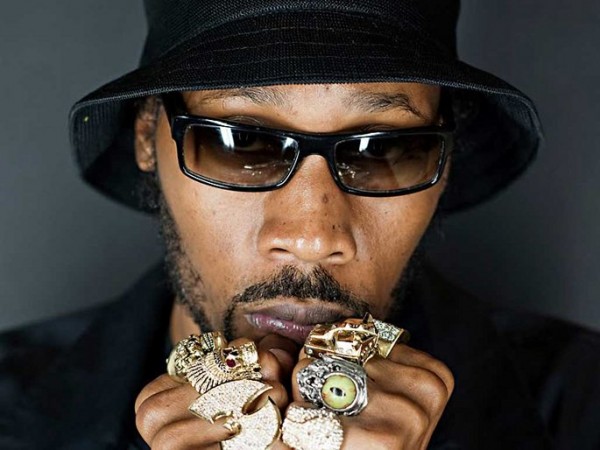
Keep in mind that no actual dates had even been finalized by the publication time of that Forbes interview. This means that, while the idea has been discussed with a few museums, nothing other than the basic idea really seems to be in place, and that basic idea seems wrought with conflicting ideals and logistical potholes regarding its execution. Among those potential ideas includes utilizing listening tents at festivals, but I’m not sure how would they even regulate something like that. They define “only the most dedicated” as those willing to shell out the cash for this experience, while continuously touting the level of exclusivity involved; however, if they do choose to employ festival listening stations, that completely undermines both of those concepts. Another question: as far as the “once in a life time experience,” would it consist of everyone being required to listen to the album at the same time during an uninterrupted streaming, since there’s only 1 copy; not to mention carving out a 2 hour block to do so in the middle of a day at a music festival. The only thing that they seem to be 100% sure about is that this idea is somehow groundbreaking/revolutionary/game-changing and that they expect someone to give them several million dollars for coming up with it.
Equating this “secret” album to the “scepter of an Egyptian king” is more than a far reaching analogy, as the two objects in question clearly bear some very fundamental differences. Beyond the fact that any museum likely to house an ethnographic artifact of that nature is also much more likely to do so with the intention of providing access to the community and without such an exorbitant ticket price, the assumption is that the scepter would already possess an incredible amount of historical and cultural value, as opposed to RZA‘s project which only seeks to inject significance into an object in real time, while wagering that the fanfare alone will be enough to generate historical and cultural value for it in the future. Of course, we are the ones that do or do not collectively bestow value on something like this, not those who create it and demand the fee. We accept, embrace, and/or endorse this principle, or we simply reject it. And, in essence, the idea of where and on which we place value embodies the entire crux of the “debate” put forth by the noted chess enthusiast, who, himself, has been quite open about his own willingness to dump excessive amounts of cash into supporting his own chessboard collection, if it calls for it. If announcing the release was the first move, it didn’t take much for someone to respond and let Diggs know exactly what he had on the table. In an April 2nd interview with Billboard, the rapper/producer claimed that, among the several offers that he had already received, one of them was already as high as $5 million.
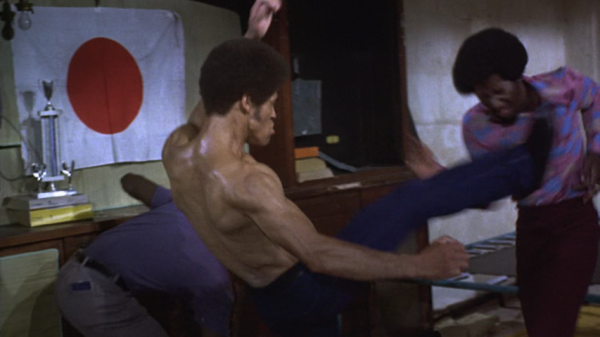
THE KICKSTARTER CAMPAIGN
I initially saw something about the Once Upon A Time In Shaolin project in passing, but it just seemed like a gimmick that I had no interest in paying any further attention to. It wasn’t until I came across a kickstarter campaign set up by a pair of Wu-Tang fans named Russell Meyer (29) and Calvin Okoth-Obbo (26), for the purpose of crowdfunding enough loot to bid on the album–or rather a reddit link to a Pitchfork article about the kickstarter campaign–that I began to look deeper into the whole project and analyze some of it.
The kickstarter is titled “Once Upon A Time In Shaolin – For Wu Fans, For Wu People” and is listed as being posted “by Fans of Wu Tang the World Over.” It doesn’t really go into too much detail, but in big bold letters at the top of the body, it reads the following:
“Wu Tang is releasing Once Upon A Time In Shaolin to the highest bidder. Let’s raise money, win the bid & give the music away for free.”
Below that, it briefly explains what the project is, before going into the following:
For all the fans who won’t be able to pay 30-50 bucks to listen to a double album in one sitting, let’s raise enough money to buy this album and then turn around and give it away for free. Wu members can still get their CREAM and the rest of us get to enjoy an epic album instead of some uber rich bastard keeping it to himself like a collector’s item.As the founder of this group I pledge to not keep a single penny of the money raised. Every cent will be bid to win the album. If we don’t get it then everyone gets their money back.
Following that is the only other section. Titled “Risk And Challenges,” here’s what it says:
The risk is some Saudi oil baron’s kid spending his dad’s money to collect a trophy and then he’ll keep the album to himself and fans the world over will suffer.
If for some reason we are unable to purchase the album to distribute it to all fans or we are outbid, there will be a vote to either refund all money to backers or use the money to fund a Wu Tang related project such as a free concert for backers.
The founder of this group will not profit by even a single penny of backers’ contributions, nor will a cent be spent until the auction date when the entirety of funds raised will be bid in an attempt to win the album.
I saw the reddit post early on and left a simple response to it that got some reaction, remaining the top comment in the thread, and effectively entering me into a conversation that I wasn’t initially planning on being involved in, at all. Here’s what I asked:
Why is nobody questioning the fact that the winners–the people who started the kickstarter campaign–actually DO make a profit off of any donations? There’s no way that they’re going to share the physical copy and hand-crafted silver/nickel box, which is worth a ridiculous amount of money. You’re still bidding for these guys to own it; they’re just letting you know that if they do, they’ll let you listen to it.
Instead of fading down the page, the comment grew in both upvotes (nothing too fantastic for reddit, but enough to keep it elevated at the top), as well as in responses trying to set me straight. One rebuttal was, “I know these fools and they’re legit dudes with good intentions. It’s not like you can cut this thing apart and give a piece to every bidder. At least the music will be shared.” Many others explained to me that “the music is what matters most,” and reiterated that, at least it would still be distributed. The more valid responses point out that the Pitchfork link actually “answers” my question by quoting Okoth-Obbo addressing the issue during a recent interview conducted with the duo by DNAinfo New York. “We could rock-paper-scissors to see who gets to hold it,” he said. “Or we could do a vote or raffle of all backers to see who keeps it. It’s not about ownership, it’s about getting it out there. We’d rather just get the musical content and be able to share that with the people who want to be able to appreciate it.“
And that has been one of my primary concerns with both the kickstarter campaign, as well as with the Once Upon A Time In Shaolin project, itself; nobody’s really got any of the details worked out other than the fact that they simply want millions of dollars given to them. But don’t worry, they’ll get around to ironing out the wrinkles later.
The conversation in the reddit thread continued to unfold, touching on various aspects and potential issues, and migrating into different directions. I began by simply replying to the replies that I received under my original comment, but quickly became more engaged in the topic and the conversation surrounding it. Eventually, Russell Meyer appeared in the thread to address the questions that had been raised regarding the kickstarter campaign that he co-founded. He even addressed me specifically, as I had taken on the role as the largest opponent to their cause on the page, by default. In reality, I am simply an opponent of blindly endorsing anything without a proper discussion and understanding of what it actually entailed. Blind endorsements just happen to be what both of these projects thrive on.
Here’s what Russell graciously came to explain in reference to their goals with the campaign:
I’m one of the founders of this and I appreciate the support from all of you who have positive feelings and attitudes towards this project. Any shares of links, word of mouth and donations of any size can only help us.
For those of you who are skeptical or disapproving of the aims of this idea, like dead_c, I understand your skepticism. We think it’s an extreme longshot as well. Even if we don’t win the bid, maybe it will raise awareness to artists that fans are hungry for content and are willing to band together to try to achieve a common goal. Our main concern is that fans who want to consume this art won’t be given the chance. If we fail then at least we tried and we’re no worse off than if we succumbed to apathy.
Regarding the case [he’s referring to the ornate box housing the album], which seems to be the main concern of dead_c, I can assure you that that isn’t and has never been our end goal. We’re about the music. We joked in our interview that we might rock paper scissors for who gets to own it, or we’ll randomly give it to a backer raffle style, or maybe we’ll donate it to a museum like the Rza had envisioned. The packaging of the content, however beautiful, is not what gave me incentive to start this kickstarter.
I have to believe that the Clan would prefer that fans the world over be able to collectively purchase and share the music vs one owner keeping it exclusive.
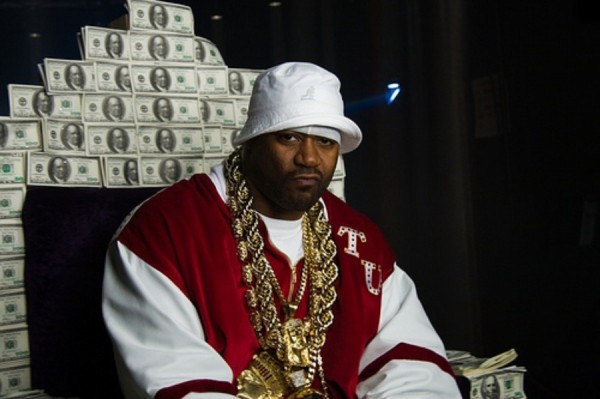
THE MONEY/WHAT IF THEY DON’T WIN?
So… since I’m clearly a joy murdering asshole that defecates on dreams, I’m going to go ahead and dismantle what is an otherwise inspiring and well-intentioned effort by pointing out the flaws that I interpret in each step of the logic being used to support it.
Let’s start with what is easily the biggest issue: Meyer and his colleague would like us all to come together to send them a total of at least $5 million. Forget about the fact that this isn’t the end of It’s A Wonderful Life; that, for whatever reason, us as a people would never get together to raise millions of dollars to help the homeless or build an orphanage; and that this money is going to something as trivial as an album that nobody’s ever heard before by a group that already has another full-length coming out this year, with a production that is currently in turmoil and that the public seems far less emotionally invested in; but there’s no guarantee that these guys are even going to be able to purchase Once Upon A Time In Shaolin, even if they meet their kickstarter goal.
For those unaware of how the crowd funding site operates, a monetary goal is set and if anything less than that set goal is achieved, then no money is received. But as long as the goal is reached within the allotted time frame, whoever started the campaign gets to keep it all, including any funds that exceed that initial goal (well… maybe not “all”, but we’ll get to that shortly). Also of note is that the $5 mil goal was only selected because RZA mentioned that figure as the last highest offer that he received weeks ago, so a matching offer is far from likely to take it. Most kickstarter campaigns have respective “rewards” set up at various tiers relative to each donor level, and that’s generally what keeps people donating money after the goal has been reached; they want to receive those respective rewards. Meyers and Okoth-Obbo‘s campaign doesn’t have various donor tiers and the only reward is the receipt of a digital copy, just like everyone else will receive, so there’s no incentive to keep donating after the “goal” has been hit. This means that if sufficient funds are even raised, they will, most likely, plateau at the minimum. Another difference with this campaign and the more typical versions that prove successful is that the latter needs to justify their efforts, often with a detailed breakdown of their intentions and how they plan to spend/distribute their funds. In other words, “Where’s the money going?” Any funds that are yielded go into the project that they are working on. So, whether it’s a book, a documentary, the production of an album… whatever, the money is still invested into the end goal on some level. But what happens if the money is raised to purchase the WU-Tang album, but they lose the bid, or are even flat out denied the right to bid on/own it? Now that these guys are just sitting on millions, what do they do with it?
The reason that the more involved campaigns make an effort to provide proof of intention–for example, if you’re doing a documentary on Rutger Hauer and you show clips of the film, including video of the actor verifying the project–is because, there is nothing holding those campaigning to follow through on their promises, so the donors have to believe that their money is going where it’s supposed to go. Again, the promise of rewards helps buffer anxiety and generate that trust. I donated to an of Montreal documentary project and was supposed to receive my DVD in March of last year, as well as to the creation of a PIXIES book that still hasn’t shown up, because both projects have been “delayed,” and those are much more credible sources than a couple of randos from the interwebs. When asked directly on reddit about what they’d do if unable to purchase the album, Russell replied that they’d “refund all the money,” but there are issues with that as well, as I detailed in my response to his claim.
Your Kickstarter has been fairly unclear about exactly what would actually happen, although I concede that returning it is definitely listed as a potential option. Nothing against you–I believe that your intentions were straight in creating this–but, at it’s core, the premise is that, if you are provided with 5 million dollars and actually do use it to try and bid on the album, only to lose, you will simply take 5 MILLION DOLLARS, which you already have in your possession, and casually send it all back. Keep in mind that there’s nothing on kickstarter obligating you to do so–in fact, there’s a disclaimer stating that the site isn’t legally responsible if you chose not to follow through and a warning for backers that it’s a feasible outcome that they could be tossing their money into a hole or someone else’s bank account with no return. Also, I’m not sure what/if kickstarter takes, percentage-wise, from a crowdfunding campaign, but if there’s something at all and, especially, if it’s substantial, then you really wouldn’t have all of the funds in the end to return to the backers anyway. Also, where do taxes figure into a situation like this?
People murder for far less than 5 mil, so it’s a lot to expect someone to be given that much loot and trust them wholeheartedly, simply because they have one unifying interest. The fact that the one thing that connects them is an affinity for the group that wrote “C.R.E.A.M.” doesn’t really help to quell those concerns, either.
My response to those concerns came in the form of an update on the kickstarter page, with them adding a F.A.Q. section.
Q: How will you refund the backers if you don’t win the bid?
A: We’ll refund money to our backers as best we can. Ideally Kickstarter refunds in full but if Kickstarter charges a percentage share (this is covered in the fine print that nobody reads when you donate I think) then unfortunately we can’t go out of pocket to make up that %. That said, the highest bid we’ve seen so far is $100 so if Kickstarter pilfered 8% for a refund we’re talking about a small percentage not being recouped. It does suck that backers would be taxed for getting their money back if this project fails but we simply don’t have the resources to make up the difference or the time to individually send back small amounts of money to the hundreds or thousands of backers we’ll have at project’s end. Thank you very much for the support.
While I’m well aware that they’re speaking in regards to the cost to each individual, when they refer to a “small” amount not being recouped, it’s important to note that a “pilfered 8%” of 5 million is actually $400,000. That’s 400 grand that could have funded endless other campaigns and/or gone to much more important social causes, simply lost through transactions. It also sounds as if they might be stating that the percentage lost is charged by kickstarter for a donation retraction. If this is the case, I would have no problem finding the “resources” to refund the money myself for an amount that large. [Navin R. Johnson wrote individual checks for the opti-grab recall, after all.] Also, if 8% is considered so minimal, why not subtly skim an extra .50%, do it personally, and pocket a 25 grand fee for your efforts? As I’ve already mentioned, I’m positive that isn’t the intention and that the idea of the campaign seems noble in theory–much more noble than privately “releasing” the single copy album–but there are too many variables and loose ends with this thing. You have to be expected to answer some questions when you’re asking strangers for 5 MILLION (real life) DOLLARS.

